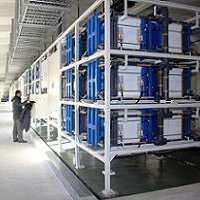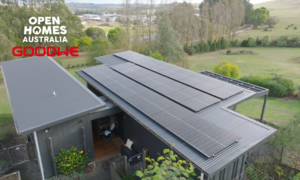Testing of the Zhangbei National Wind and Solar Energy Storage and Transmission Demonstration Project’s 8 megawatt-hour vanadium flow battery system was successfully completed last weekend.
According to Sparton Resources Inc., the battery was continuously operated at full design capacity for ten days and exceeded specifications by 10%. Smoothing tests using State Grid North China Company Limited’s software were also satisfactorily completed.
“Both State Grid and the Company technicians have indicated they are extremely pleased with the program and will prepare comprehensive reports on the test procedures and results,” says Sparton Resources. ” These will be submitted shortly to State Grid for acceptance.”
Flow batteries store energy in liquid solutions contained in two separate tanks forming the positive and negative side of the battery. Pumping liquids one way charges the battery and the other direction discharges it.
According to the U.S. Department of Energy’s Global Energy Storage Database, The Zhangbei Project will eventually grow to include 500 MW of installed wind capacity, 100 MW of installed solar PV capacity and 110 MW of energy storage.
In addition to the vanadium flow battery, the project also includes 14MW of lithium-ion batteries. 4MW of sodium sulfur batteries were also to be installed, but have been delayed due to safety concerns.
Some supporters of flow battery technology believe it is better suited to long-duration, utility-scale and energy-intensive applications compared to lithium-ion batteries; with the latter having more application for commercial and residential energy storage. Regardless, lithium-ion has been increasingly appearing in utility-scale applications.
While flow batteries have usually been perceived as too bulky and cumbersome for home applications, Australian company RedFlow is currently developing a “plug and play” type residential flow battery system.
The USD $1.89 billion Zhangbei Project is huge, covering a total land area of 200 square kilometres and boasts world’s largest number of different operational renewables technologies in a single new energy project. It’s also the world’s largest chemistry-based energy storage station.
Sparton Resources says the clean electricity generated and stored by the project supplies a portion of north China’s energy needs and it will play an important role in China’s “clean, green” 2022 Winter Olympics.












































